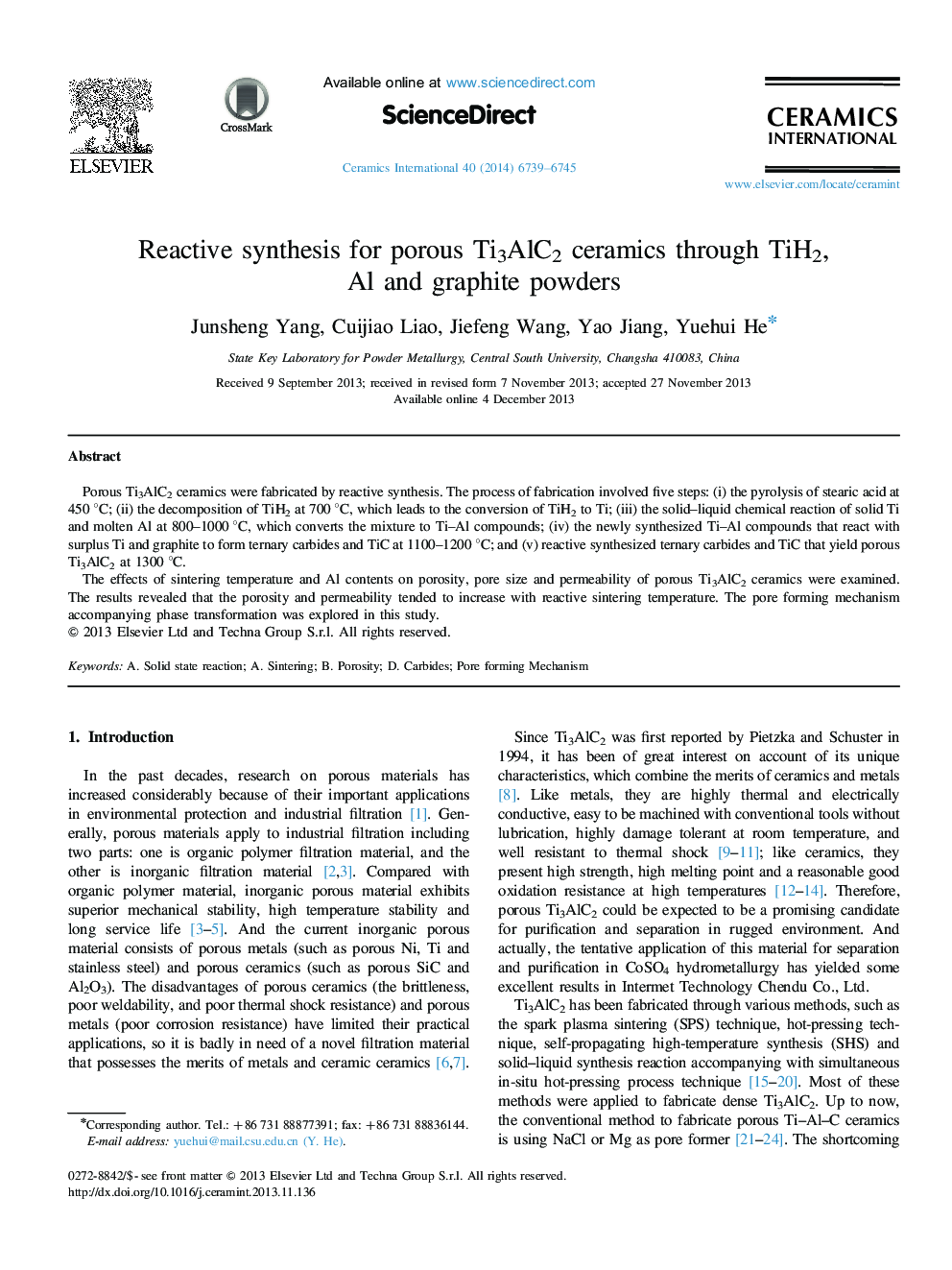| Article ID | Journal | Published Year | Pages | File Type |
|---|---|---|---|---|
| 1461131 | Ceramics International | 2014 | 7 Pages |
Porous Ti3AlC2 ceramics were fabricated by reactive synthesis. The process of fabrication involved five steps: (i) the pyrolysis of stearic acid at 450 °C; (ii) the decomposition of TiH2 at 700 °C, which leads to the conversion of TiH2 to Ti; (iii) the solid–liquid chemical reaction of solid Ti and molten Al at 800–1000 °C, which converts the mixture to Ti–Al compounds; (iv) the newly synthesized Ti–Al compounds that react with surplus Ti and graphite to form ternary carbides and TiC at 1100–1200 °C; and (v) reactive synthesized ternary carbides and TiC that yield porous Ti3AlC2 at 1300 °C.The effects of sintering temperature and Al contents on porosity, pore size and permeability of porous Ti3AlC2 ceramics were examined. The results revealed that the porosity and permeability tended to increase with reactive sintering temperature. The pore forming mechanism accompanying phase transformation was explored in this study.
